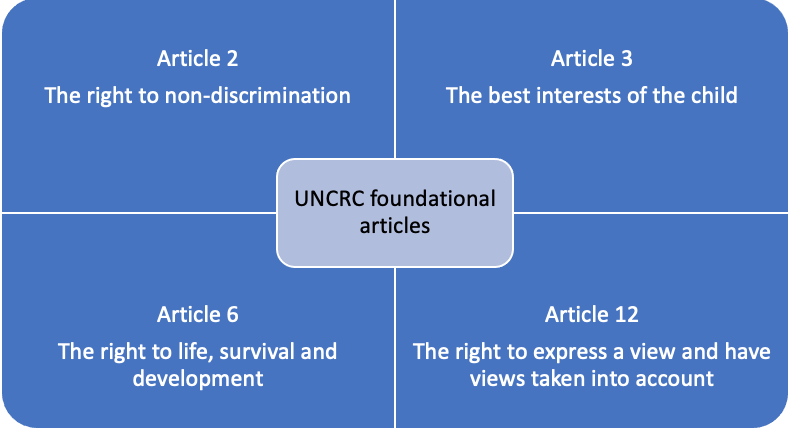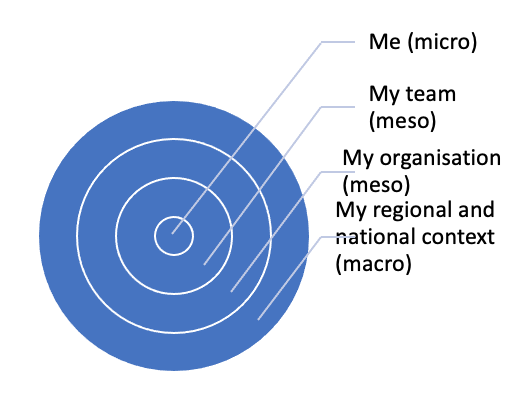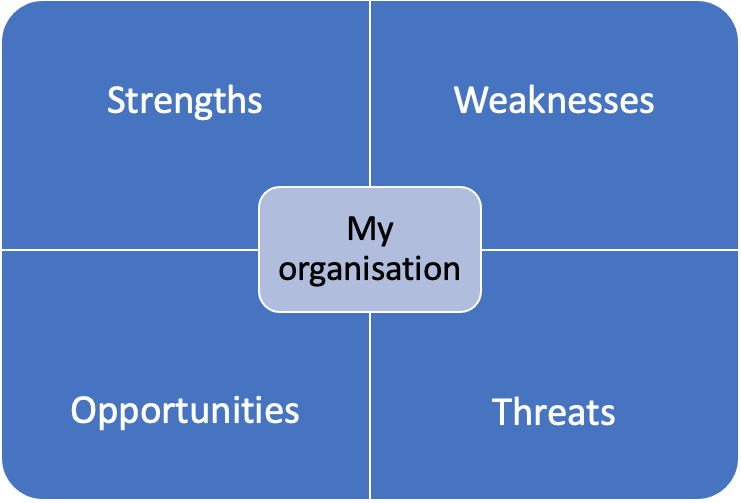Exercises – The law, UNCRD, General Comments
Section A
Getting engaged in children’s rights
Exercise A1
Purpose of exercise
The purpose of the following exercises is for participants to explore how a commitment to human rights means a commitment to equality and vice versa and to consider these issues through the lens of the situations of other people. The exercise aims to demonstrate how choices or a lack of them form a pattern in society.
See also International Legal frameworks and briefs on regional legislations in the 4 countries: Belgium, Northern Ireland, Norway, Spain
Instructions
Everyone finds a space that they are comfortable in with no distractions.
The facilitator reads out statements from the Universal Declaration of Human Rights as follows:
All human beings are born free and equal in dignity and rights (article 1)
Everyone is entitled to all the rights and freedoms set forth in this Declaration, without distinction of any kind, such as race, colour, sex, language, religion, political or other opinion, national or social origin, property, birth or other status. Furthermore, no distinction shall be made on the basis of the political, jurisdictional or international status of the country or territory to which a person belongs, whether it be independent, trust, non-self-governing or under any other limitation of sovereignty (article 2)
The facilitator invites group members to think of a child they have worked with.
With this child in mind, the facilitator invites the participants to form a line standing next to each other.
Still with this child in mind, the facilitator invites the participants to listen to the following statements and move forwards for each statement that applies to the child. The statements are as follows:
- I can buy new clothes when I need/want them.
- I have not experienced discrimination because of my religion.
- My house can be heated enough when it is cold.
- I can play outdoors when I want.
- I have not been bullied because of my disability.
- I can get access to extra tutoring to help me in my education.
- I have not experienced discrimination because of my colour.
- I can get medical help when I need it.
- My views are sought in my school and I am listened to.
- I have not experienced discrimination because of my culture.
- I am not frightened to talk about my sexuality.
- My views are sought in my family and I am listened to.
By the end of the exercise, individuals should find that they are moving ahead at different rates (thus the exercise is a visual representation of differing access to basic rights).
The facilitator invites participants to give some feedback on the exercise around the following questions:
- What did it feel like to be stepping forwards?
- What did it feel like to be unable to step forwards?
- At what point did group members begin to notice the differences in the rates of moving forwards?
The facilitator ends the exercise by underlining the importance of the UNCRC in children’s lives that if applied, helps promote and safeguard equality of opportunity.
Exercise A2
Purpose of exercise
The purpose of this exercise is for the group to establish a common group understanding about the importance and relevance of children’s rights.
Instructions
- The facilitator invites people to get into pairs to engage in a 3-minute written exercise to complete the following: My statement on children’s rights is …
- The facilitator then asks participants to read out their statements and adds the key words to a white board/flip chart/chat function.
- The facilitator collects the key words and writes a collective statement about children’s rights.
Section B
What gets in the way of engaging in children’s rights
Exercise B1
Purpose of exercise
The purpose of this exercise is for participants to think about barriers (at the levels of the individual, the team, the organisation and wider society) that hinder engagement with children’s rights?
Instructions
The facilitator invites participants to draw a series of concentric circles and to list factors under each.
The facilitator can highlight the following:
- Me – Factors could include lack of knowledge, skills and values that reflect organisational cultural norms and that prioritise other aspects of working with children
- Team – Team culture is not ‘pro children’s rights’
- Organisation – Lack of policies and practice guidelines that specifically mention children’s rights. Lack of mention of children’s rights on forms used for casefiles and in work with children.
- Regional and national context – ambivalent/ambiguous views and approaches.
Section C
What is the UNCRC, where does it come from, why is it important and what are its provisions?
Exercise C1
Purpose of exercise
The purpose of this exercise is for participants to gain knowledge about the UNCRC, its origins, its provisions, and its implementation.
Instructions
Participants are to view/read the transcripts of these YouTube short videos (none is longer than 2 minutes):
Exercise C2
Purpose of exercise
The purpose of this exercise is for participants to ensure they have access to UNCRC articles and relevant UN General Comments.
Instructions
The facilitator should provide participants with a printout of/access to the UNCRC articles and UN General Comments and General Comments/Recommendations.
The facilitator should invite participants to consider the 4 interrelated, foundational UNCRC articles; articles 2, 3, 6, 12.
The facilitator invites the group to discuss the implications of these. The facilitator needs to highlight the following points:
- These articles are interrelated and inextricably linked and therefore children’s participation rights draw on these 4 articles (and other related articles) together.
- Article 2 means that we must start from the fact that no matter what the age and background of the child, they have a right to non-discrimination and that this applies to their article 12 rights.
- This means that all children regardless of age have a right to express views and have these taken into account.

- This is fundamental. For example, it is not possible for professionals to determine best interests’ decisions (article 3) without professionals seeking the views of children and taking these into account (article 12). Articles 3 and 12 are complimentary.
- Article 6 highlights that enabling children to access their participation rights can contribute to their health, survival, and development.
- Children’s participation rights are given effect through articles 2, 3, 5, 6, 12 and 13
The facilitator invites participants to consider UNCRC articles 5 and 13. What do they mean?
The facilitator should end this section by inviting participants to consider a case they are/have been involved in and how these articles, which relate to participation rights, might be applied.
Section D
The UNCRC applied in practice: case study
Exercise D1
Purpose of exercise
The purpose of the following exercise is for participants to apply CRC articles 2, 3, 5, 6, 9, 12, 13 to case studies and to consider how advice contained in the UN General Comments could assist them and their organisations.
Instructions
The facilitator divides the group into 3’s and asks them to consider how and in what ways the articles could be applied to the Case Study and what articles can be used to challenge adult decision making.
The facilitator brings the group together and explores feedback.
Exercise D2
Purpose of exercise
To provide practical tips to professionals that might help as they apply the UNCRC articles in practice.
Instructions
The facilitator draws attention to the UN General Comments. These provide detailed guidance on the implementation of the UNCRC articles and UN General Comments and General Comments/Recommendations.
Specifically, regarding the participation rights of children and in particular young children, the following apply:
- General comment No. 7(2005): Implementing Child Rights in Early Childhood
- General comment No. 12(2009): The right of the child to be heard
The facilitator draws attention to The template letter and to other relevant local, regional resources.
Ending the session
The facilitator asks the group to reflect on:
- One new thing they have learned.
- One new thing they will do differently in practice.
- One new thing they will ask their team, organisation to consider in terms of policy/practice changes.

